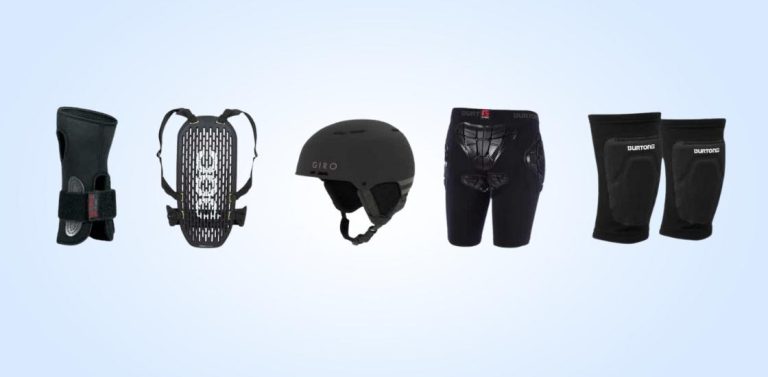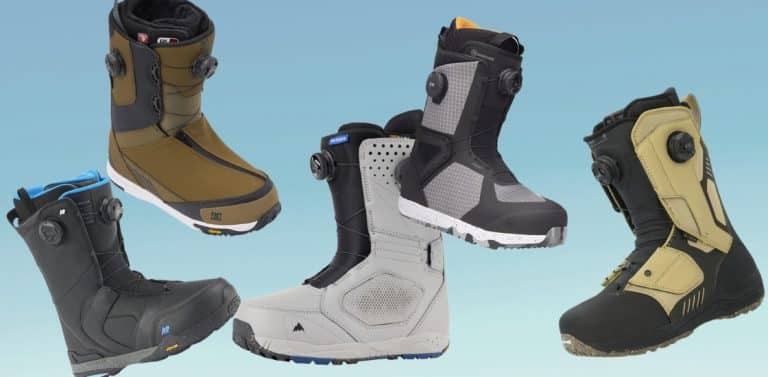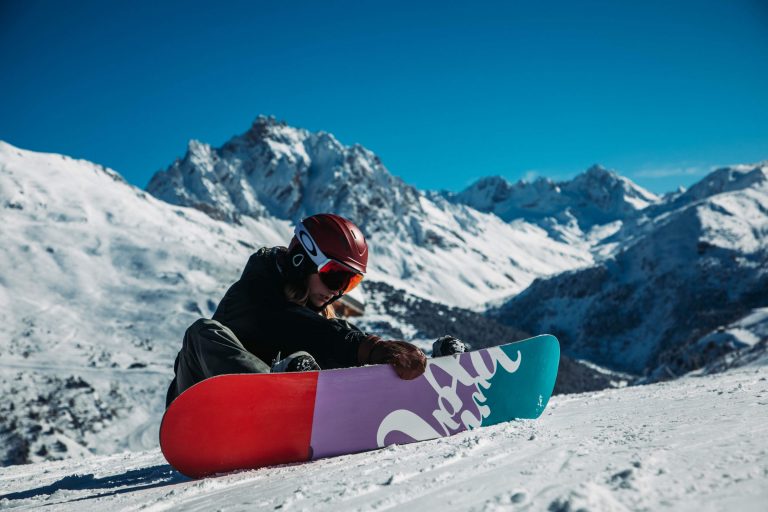You might have noticed that not all snowboard boots have the same lacing system. There are three main systems for snowboard boot lacing:
- Traditional
- Speed lacing
- BOA®
Some are quicker to lace than others, while some are simpler to repair if the system breaks. Being aware of what lacing system you are choosing is an important part of picking the right snowboard boots for you.
In this article we’ll dive into the world of boot lacing and go over the pros and cons of each lacing system.
Why Snowboard Boot Lacing Matters
To work optimally, snowboard boots need to hold your foot in place inside the boot amidst the dynamic movements of snowboarding.
Practically, that means no heel lift, no sliding side-to-side, and not too much room in the toe box of the boot.
The reason we don’t want these feelings is that they result in inefficient performance due to equipment.
When we move our body parts, such as our knee, our ankle, and even our toes, we want the energy created by these movements to go directly to our boots, to our bindings, and then finally to our snowboards, as efficiently as possible.
If we first have to move through space before touching before reaching our boots, we’ve wasted some of our energy. So to make sure energy is transferred as efficiently as possible, brands have created the various lacing systems.
The following sub-sections will cover each of the most common lacing systems.
Traditional lacing
Traditional lacing is, as it sounds, akin to the cord laces used to fasten regular shoes, only they are longer and more robust to meet the demands of a snowboard boot.
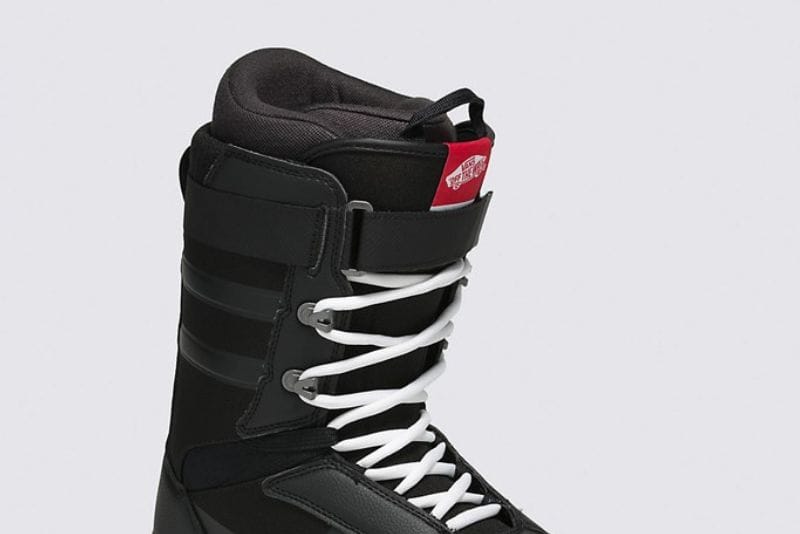
Pros
Cons
Traditional lacing systems are best suited for:
Pro tip – when lacing, tie a simple granny knot after each eyelet before moving to the next level to secure the tension you created. Also, make sure to tie a double-knot at the end.
Speed lacing systems
Speed lacing systems use two “quick-draw” cords, which when pulled create tension up the entire lacing system of the boot. That tension is secured by pulling the cords, or laces, backwards into a lock.
One lace controls the tension of the lower section of the boot, and the other controls the upper section.
Speed lacing systems are common on boots from brands like Burton and Salomon.
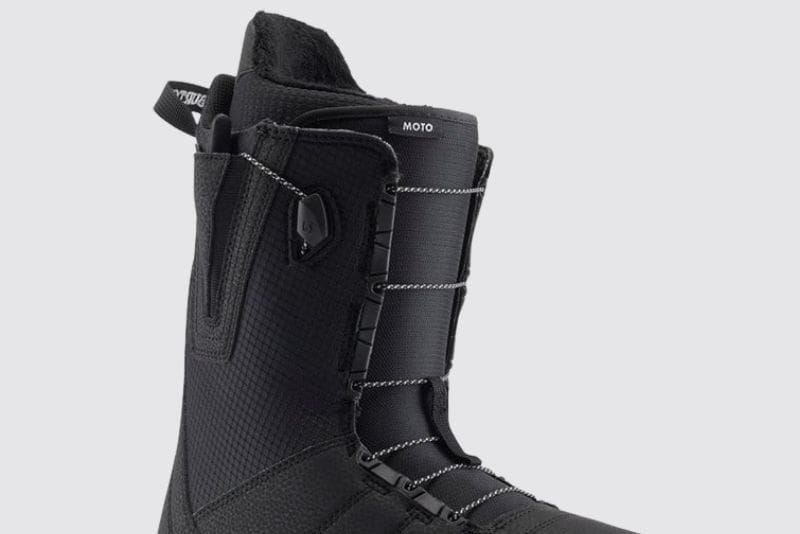
Pros
Cons
Speed lacing systems are best suited for:
Pro tip – Buy a speed lace replacement tool and keep it on you so that you’re prepared if you need to change them.
BOA® lacing systems
BOA® lacing systems use dials to coil a steel cable which changes the tension on the cable that is laced into the snowboard boot.
BOA® lacing systems can be single, dual, and triple dial systems, delivering tension to specific zones of a boot.
- Single-dial systems use one dial to deliver tension across one coil that is laced across both the upper and lower sections of a boot.
- Dual-dial systems use two dials to allow different levels of tension for the upper and lower sections of a boot.
- Triple-dial systems work much the same as dual-dial systems, with the addition of a third dial which controls the tension of the ankle/heel zone to allow a rider to control heel lift.
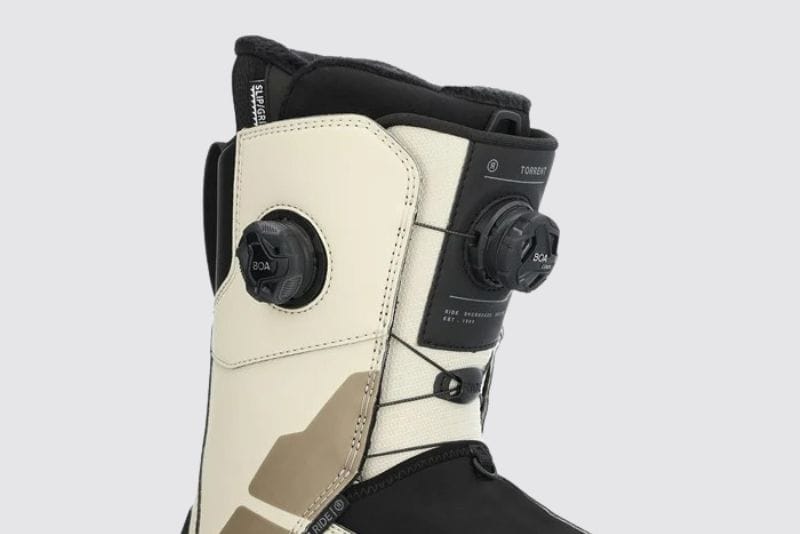
Pros
Cons
Speed lacing systems are best suited for:
Pro tip – Buy a BOA® replacement kit in advance, so that you’re prepared if you need to replace the system.
Hybrid lacing systems
Select companies have designed boots with hybrid lacing systems, combining the benefits of BOA® with either traditional laces or speed laces.
The concept is to create desired tension in upper and lower zones with traditional or speed laces, and then fine-tune heel hold using a BOA® dial.
Blending both systems gives the rider a level of customizability that suits intermediate to advanced riders; those who really know precisely where they want their boots to feel snug and where they can feel a little looser.
The Vans Infuse snowboard boots are one example of a hybrid lacing system.
How to Choose the Right Lacing System for You
Choosing the right snowboard boot lacing system for you comes down to a few considerations:
- Budget – Generally, the more technology involved the more expensive things are. So, choosing traditional laces is at the cheaper end of the spectrum and a three-dial BOA® system will be at the more expensive end.
- Hand strength – BOA® systems require notably less hand strength than speed laces or traditional laces, which is why they are well suited to cold days where dexterity can suffer. Traditional laces probably require the most hand strength of the systems, as it’s needed to maintain tension while tying knots.
- Personal preference – If you can find the foot, ankle, and heel hold you’re looking for with a particular system, then stick with it!
If you can, try to demo boots either in-store or during demo days at your local resort. This will let you discover which lacing system is the best for you through personal experience, which nothing can replace.
If doing an in-store demo, don’t forget to wear proper snowboard socks and to replicate snowboarding movements to feel how much hold the boots provide. Toe-side movements (i.e., place your hands on a wall, balance on the balls of your feet, and bend your knees) in particular are the ones that generally produce heel lift.
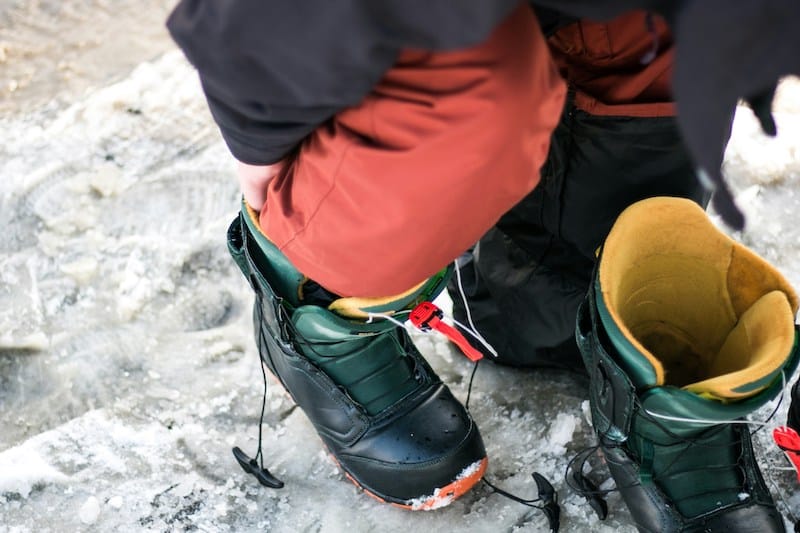
There are two places where your snowboard boot need sit snugly next to your body:
- The ankle joint – to hold your heel in place inside the boot
- The shin – to efficiently transfer the energy created by your body movements through your boots to your snowboard.
Along with choosing a boot that fits your foot and lower leg anatomy, snowboard boot lacing systems will determine how well a boot holds your foot in place while shredding down the mountain.
For an in-depth look at how to choose boots that fit your body type, check out our dedicated article Snowboard Boot Sizing Guide.
Properly fitting boots matter as much for beginners and intermediates as they do for experts.
Common beginner mistakes with lacing snowboard boots
Because beginners might not be familiar with how to lace snowboard boots, it’s worth going over a few common mistakes:
- Boot gaiters on snowboard pants go on the outside of boots, not on the inside. They often come with a little metal hook, which is designed to hook onto the laces of snowboard boots to keep them down in deep snow. Many beginners tuck the gaiters into their boots and jam the hook into their shin, resulting in a bad day.
- Loose laces, especially at the shin/top-of-the-boot area, make toe side turns and edge hold very challenging, because the energy created by bending your knees doesn’t make it to the snowboard.
- Long laces dragging on the ground or getting caught up in binding buckles, because they weren’t tucked behind the tongue of the boot.
Frequently Asked Questions
Final Thoughts
Choosing the right lacing system is a key part of choosing the right boot for you.
After reading this article, you now know that you can choose between traditional laces, speed laces, a BOA® system, or a hybrid system.
Consider your budget, your hand strength, and your personal preferences. To determine your personal preferences, try your best to demo each of the systems in a snowboard shop or at a demo day at your local resort.
Whatever you choose, know that for beginners comfort and convenience should be top-of-mind, and as you progress beyond those levels, knowing exactly how you like your boots to feel will play a larger role in your choices.
To learn more about some of the other aspects to consider when choosing boots and other gear, check out our other articles: Snowboard Boot Sizing Guide or Snowboard Gear Checklist.

